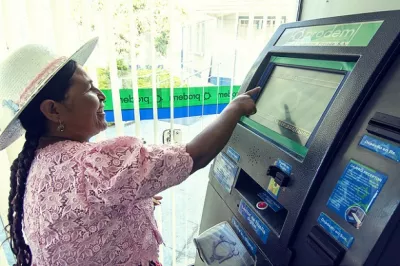Catalyzing Graduation with Village Savings and Loan Associations
A persistent question we at Fonkoze face is what members should be doing after they graduate from our Chemen Lavi Miyò (CLM) (Pathway to a Better Life) program. They receive 18 months of close accompaniment of our team, and their graduation marks the end of their need for our support. But they are still very poor. They will be better able to continue their progress within a supportive structure.
At our program’s inception, we made a simple assumption about what that next step after graduation should be. Fonkoze has long made microcredit the core of its poverty-alleviation efforts, so it was easy for us to think of our own microcredit programs.
But the results have been mixed.
We have seen many CLM graduates move into Fonkoze credit and then continue to make progress. But there are problems, too. Some CLM graduates live in areas that are difficult to serve for a commercial entity that needs to be sustainable. Fonkoze’s credit programs have to break even. They are not supported by donations, the way CLM is. And some areas that CLM serves are just too expensive for credit agents and their supervisors to access. Other graduates succeed in CLM without developing small commerce as a financial activity. They live off farming or livestock instead. They cannot be served by credit designed to support traders.
So we’ve been experimenting with alternatives to Fonkoze’s credit programs, and looking for variations to standard savings mechanisms that would be suitable to the Haitian rural context. One of the most promising approaches is the village savings and loan association (VSLA). VSLAs offer a group of friends and neighbors a way to establish simple financial services on their own.

We established VSLAs in several communities. One was launched in Dolibren, a rural neighborhood in southern Mirebalais, a commune north of Haiti’s capital city, Port-au-Prince. The initial response of its members was very positive. The first time I visited, they were giving their second round of loans, even as the first round of borrowers were making their first payments.
This group decided that they would contribute five Haitian gourdes per week to their solidarity fund, less than 10 cents. Share prices are 25 gourdes. Because several members are illiterate, shares purchased were recorded in the form of stars in the member’s booklet on a line designated for a particular week. They could purchase from one to five shares, and received a star for each share.
I spoke to Atelia, a member who had begun repaying a loan. She had borrowed 1,250 gourdes to start a business buying sacks of charcoal in the area around her home, and selling them at Nan Gad, a rural market overlooking Port-au-Prince. Her business, she said, doing well, and she reported no difficulty making her repayment. She purchased five shares on the day her repayment was due. “I like borrowing from the association because all the profits stay with us,” she explained.
The second time I visited a meeting in Dolibren was at the end of its one-year term.
The payout is a long and tedious process. The group’s secretary had to count all the stars in every book and then recount them to make sure there were no mistakes. Then he had to count and recount the money in the pot. He did all this under the watchful eyes of the group’s president.
Over the course of a year of hard saving, they had accumulated over 81,000 gourdes, or about US$1,300. Several individuals had saved up US$100 or more. When they did the division, they discovered a share price of just over 30 gourdes, a 20% return on their investment. The secretary and the president then carefully calculated and recalculated each member’s share, and counted out the money for one member at a time. Members sat quietly and attentively through the tedium. They were clearly pleased.
One member, Aniolie Occilien, explained what they like about the VSLA. “It forces you to save your money. You get it all at the end, and then you can do what you want with it.” She explained that she would invest her savings in a cow. Another member, Dieula Chery, felt the VSLA worked well for her, too. She took out two loans, and invested the money in her small business. “It really helps. I was able to buy a third cow. I’ll use my savings to buy a mule. I’ve never had an animal to carry my merchandise. It will help me get it out to the main road, where the truck passes.”
Next week, the group will start a new term. This time, it will probably be larger. A number of their neighbors have been waiting to join, and it doesn’t appear as though many want to drop out. We are excited about what we are seeing and have begun to establish more VSLAs.




Add new comment